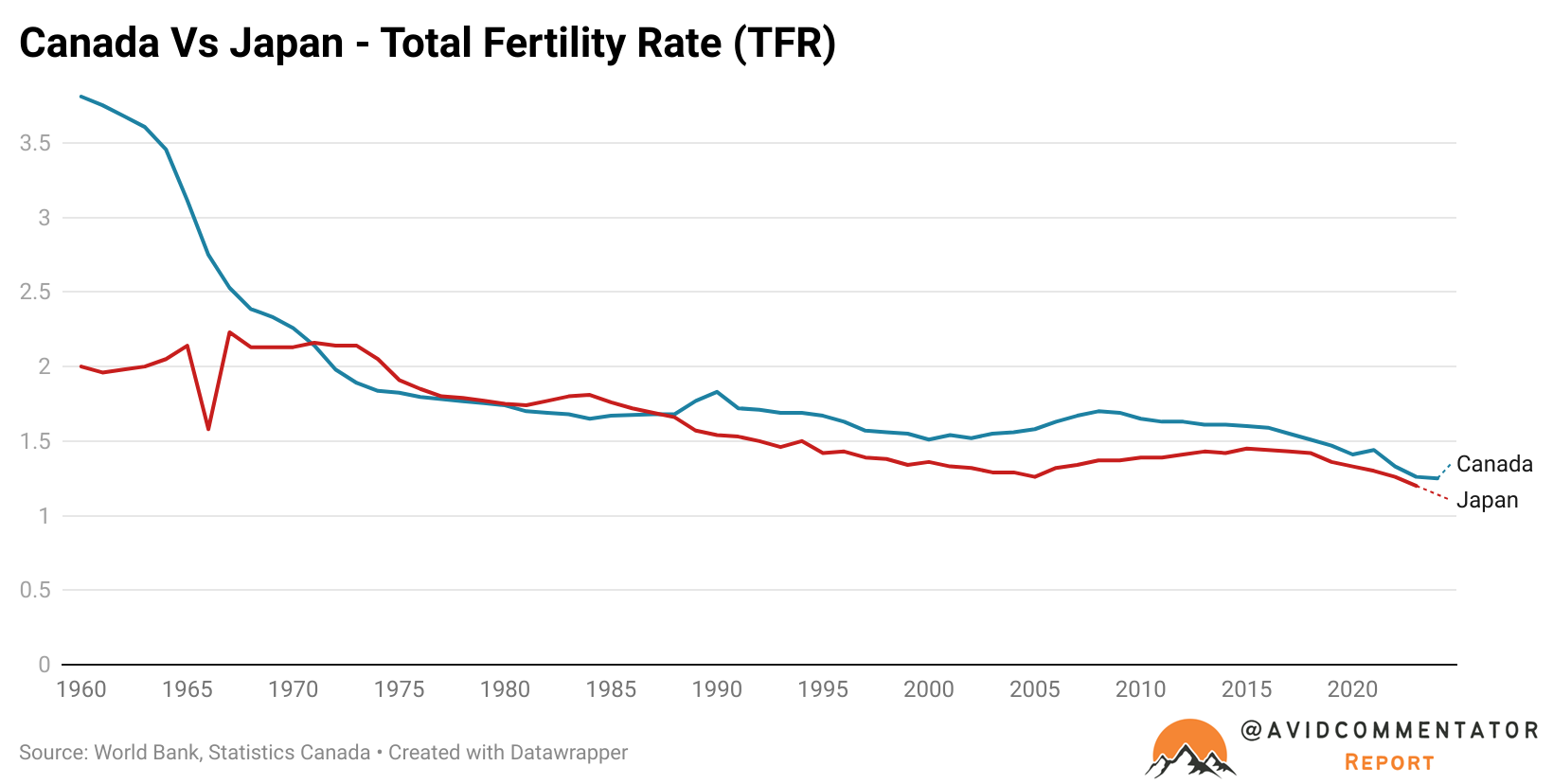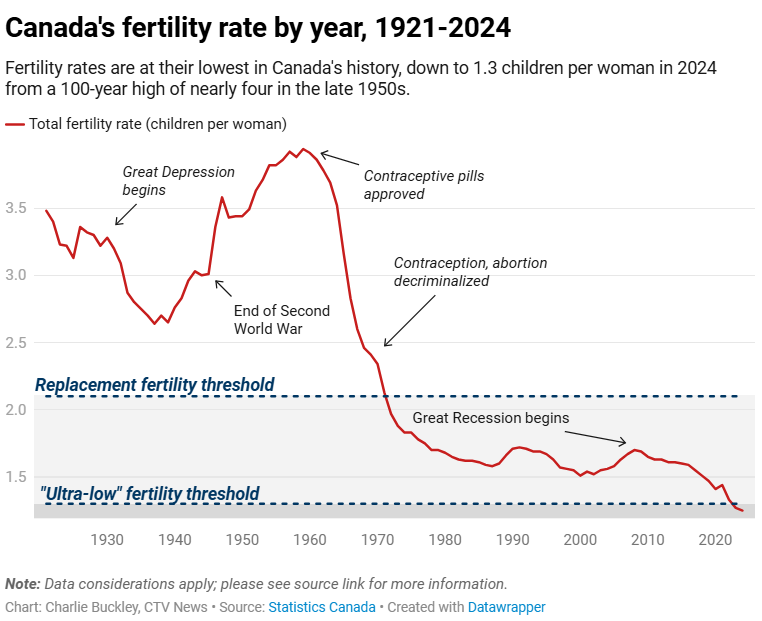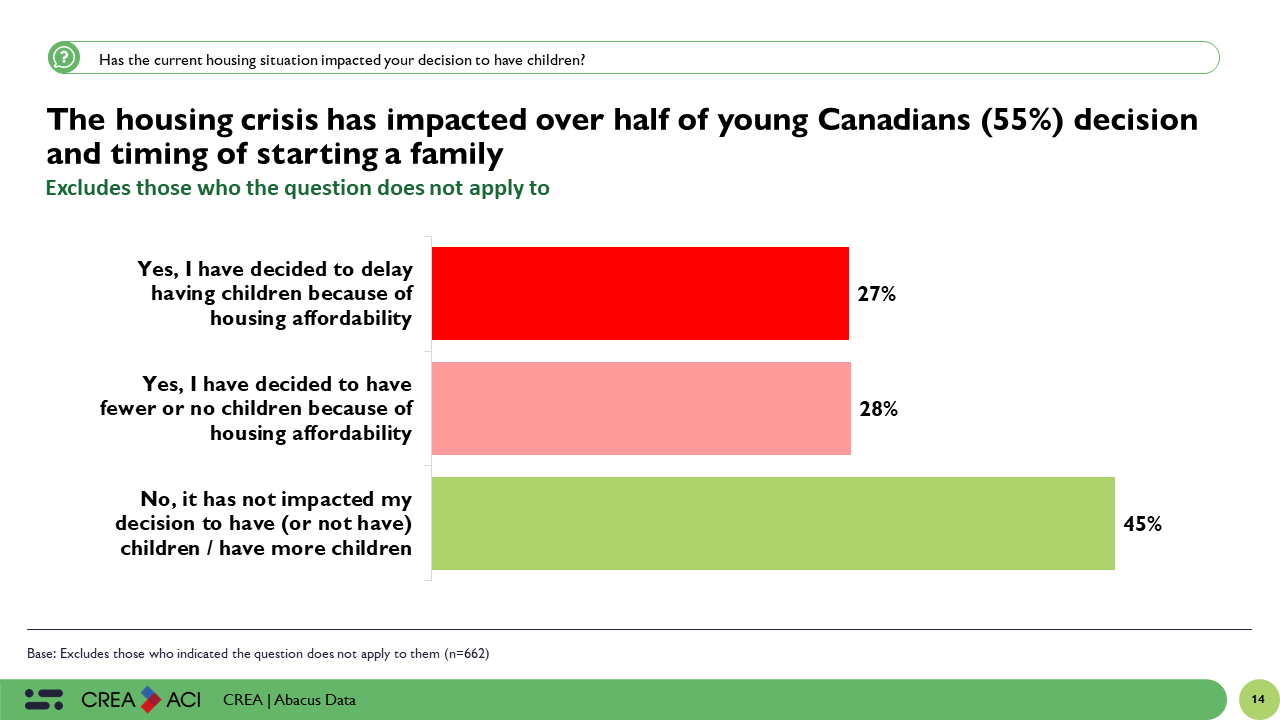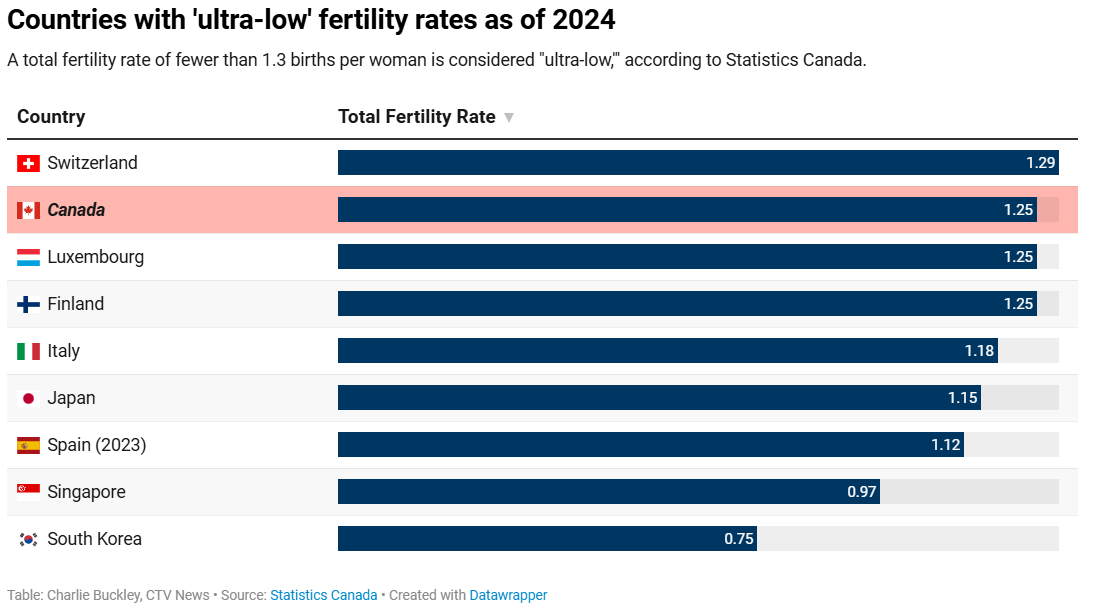With the release of the latest data from Statistics Canada, it was revealed that Canada’s fertility rate had fallen to just 1.25 children per woman.
To put this into perspective, it’s lower than Japan’s fertility rate of 1.30 children per woman recorded during the height of lockdown during the pandemic in 2021.

According to commentary from Statistics Canada, Canada now finds itself in an unenviable club, a nation defined by statistics agencies as experiencing an “ultra low fertility rate”.

Source: CTV News
According to polling by research firm Abacus Data, 55% of young Canadians say the current housing situation has impacted their decision to have children.
27% say that they have decided to delay having children due to housing affordability issues.
28% say they have decided to have fewer or no children because of housing affordability issues.

This polling echoes the conclusions of studies undertaken in South Korea, which is facing an unprecedented collapse in its fertility rate to just 0.75 children per woman.

Source: CTV News
Several studies in South Korean academia have concluded that one of the major drivers of the fall in fertility rates is the cost of housing.
According to a study from the Korea Research Institute for Human Settlements, for each 10% rise in annual housing prices, the total fertility rate would decline by 0.02. On the other hand, a 10% annual rise in rents drives a decline of 0.0247.
Given the compounding effect of rising prices over time, the impact on a long-term time horizon is extremely significant.
This echoes the findings of several reports by HSBC, which Leith covered a few months ago.
To briefly recap:
Research from HSBC shows that “a 10% increase in house prices leads to a 1.3% drop in birth rates, and an even sharper fall among renters”.
The Takeaway
While it’s certainly true that evolving priorities and rising levels of female education are playing a role in falling fertility rates, polling and academic studies reveal that circumstances, most notably around the cost of housing, are playing a significant role in the ongoing decline.
Canada shares this issue with Australia, South Korea, and a growing list of nations throughout the world.
Political leaders continue to talk at length about the impact of aging demographics and the need to prepare budgets for the inevitable challenges that lie ahead.
Although these challenges were foreseen decades ago, the conditions faced by Canadians, Australians, and young people across the developed world to birth children continue to worsen.
Ultimately, the decision to have children or not, and how many to have, should be a choice in the hands of an individual couple, not one increasingly defined by conditions created and exacerbated by the state in support of vested interests.

